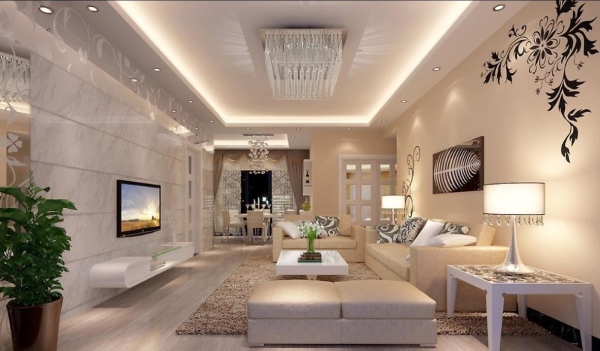The Future of Interior Lighting: How Smart Lighting is Revolutionizing Homes

The landscape of home interior lighting is undergoing a significant transformation thanks to the advent of smart lighting technology. Gone are the days when light bulbs were simple on-off devices. Today, they have morphed into advanced gadgets that can be remotely controlled, programmed to follow schedules, and adjusted to match your mood or the time of day.
This evolution has opened up a new world of possibilities, revolutionizing how homeowners perceive and interact with the indoor lighting of their dwellings.
In this article, we’ll go into how smart lighting is charting the future course of interior lighting and reshaping our homes into more comfortable and energy-efficient spaces.
The Rise of Smart Lighting Technology
Smart lighting refers to a lighting system that utilizes advanced technology like sensors, timers, and wireless connectivity to provide enhanced functionality and control over the lighting in a space.
These systems can be integrated with smartphones or voice assistants, allowing users to manage their lights remotely or through voice commands.
The concept of smart lighting originated with the development of LED bulbs, which are more energy-efficient and longer-lasting than traditional incandescent bulbs.
Implementing wireless connectivity in lighting systems has taken smart lighting to a new level, offering users greater convenience and flexibility in managing their lights.
Today, a range of smart lighting products are available on the market, including smart bulbs, light strips, switches, and fixtures, catering to various needs and preferences.
The Benefits of Smart Lighting in Homes
The benefits of smart lighting in homes extend beyond mere convenience. Here are some key advantages:
- Energy Efficiency: Smart lighting uses LED bulbs, which consume significantly less power than traditional incandescent or halogen bulbs, leading to substantial energy savings. Furthermore, the ability to schedule your lighting or adjust brightness levels contributes to even greater efficiency.
- Customizability: With smart lighting, you can customize the ambiance of each room. For instance, you can choose a calming, warm light for your bedroom in the evening and a brisk, bright light for your kitchen in the morning. Some smart bulbs even offer millions of color variations.
- Automated Control: Integration with smartphones or voice-controlled devices like Amazon’s Alexa or Google Home enables hands-free control over your lights. The ability to control your lighting remotely can enhance home security by making it appear as if someone is home, even when you’re away.
- Improved Sleep Patterns: Exposure to specific types of light at certain times can influence our sleep-wake cycle. Interior lighting solutions can simulate sunrise to wake you up gently in the morning and dim in the evening to signal your body to prepare for sleep.
- Integration with Other Smart Devices: Smart lighting systems can be synced with other smart devices in your home. For instance, your lights can flash when your smart doorbell rings or dim automatically when you start watching a movie on your smart TV.
The Future Possibilities of Smart Lighting
The potential applications of smart lighting in homes are limitless. As technology continues to evolve, we can expect even more innovations in this field, leading to:
- Better Energy Management: With the help of sensors and machine learning algorithms, smart lighting systems can learn patterns and adjust energy usage accordingly. This could lead to even greater energy efficiency and cost savings.
- Personalized Lighting Experience: Smart lighting systems could soon be able to sense your presence in a room and adjust the lighting according to your preferences. This would eliminate the need for manual control altogether, making our homes truly smart.
- Improved Health and Well-being: Smart lights that mimic natural sunlight could help regulate our circadian rhythm, leading to better sleep and overall health.
- Smart City Integration: As more and more cities embrace smart technology, integrating smart lighting systems in our homes could contribute to a smarter and more sustainable city infrastructure. For instance, streetlights could adjust their brightness levels based on the amount of natural light present or pedestrian activity.
Conclusion
The future of interior lighting is undoubtedly bright with the rapid advancements in smart lighting technology. As we seek ways to make our homes more comfortable, efficient, and secure, we can expect even more exciting developments in this area.
With personalized lighting options and energy management capabilities, smart lighting is set to revolutionize how we illuminate our homes for years to come.






